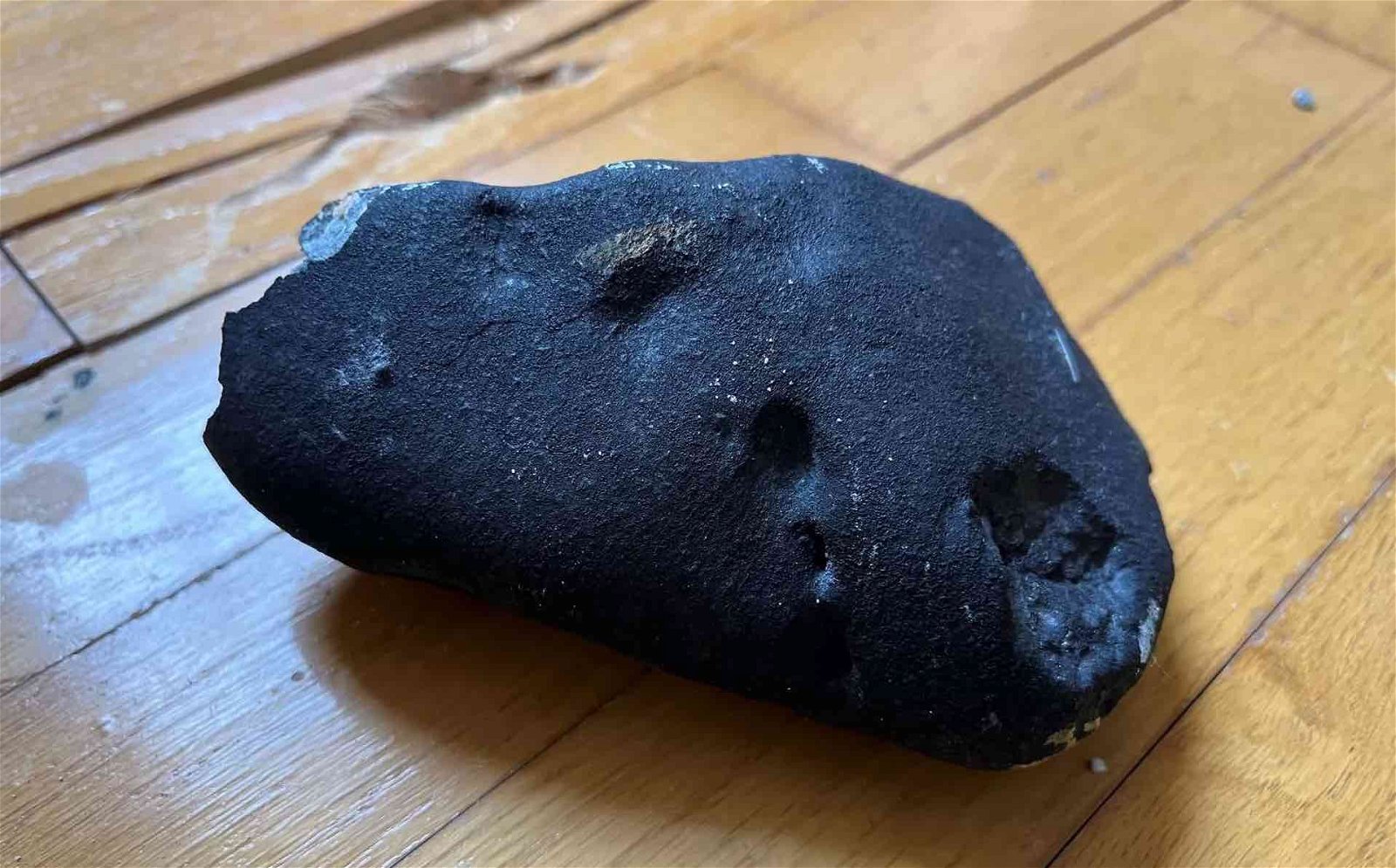When drops of water fall from the sky, we can protect our bodies from them with only a thin umbrella. By comparison, when a meteorite falls from the sky it is harder to seek shelter, apart from going deep underground.
Weather forecasters routinely discuss rain, but not the chance of being hit by a space rock. This makes sense over short periods of time, like days or weeks. But over the lifespan of the Earth, each square kilometer of our planet has been bombarded by meteorites that cumulatively deposited about a hundred times the energy output of the Hiroshima atomic bomb.
The privacy of Earth was violated by trillions of space objects over its lifespan. Could these regular invaders deliver lifeforms or perhaps even technological gadgets from afar? We do not know. The vast majority of them were building blocks left over from the construction project of the solar system planets. But some came from interstellar space.
Once a year, a Solar system meteor with a diameter of twice the height of a person hits the Earth’s upper atmosphere and releases roughly the energy output of the Hiroshima atomic bomb. These events are usually ignored because the explosions occur at a typical altitude of 40 kilometers and over an ocean since 71% of Earth is covered by water.
However, on May 8, 2023, a kilogram-mass stony-chondrite meteorite struck a house in Hopewell Township, New Jersey in the USA. The rock ricocheted from the floor, back up to the ceiling, then down again to the floor. No injuries were reported.
Should homeowners be concerned? Is this a surprising occurrence? I checked the numbers and found that this rare occurrence is completely reasonable from a statistical perspective. My calculation shows that there is no reason to get alarmed: the chance of your home getting hit while you are paying a 30-year mortgage is only thirty parts in a billion. Let me elaborate.
About 44,000 kilograms of meteoritic material falls on Earth each day. Rocks smaller than a watermelon often burn up completely into dust in the atmosphere. Nevertheless, based on Antarctic data, about five thousand kilogram-mass meteorites make it to the surface of the Earth every year. This means that the chance of a kilogram meteorite hitting a square meter on Earth is ten parts in a trillion. There are of order a billion houses on Earth, with an average cross-sectional area of about a hundred square meters per house. The product of the meteorite hit rate per unit area and the total area in houses on Earth implies that a meteorite hits a house somewhere once per year. This year, the New Jersey homeowner was the unlucky one.
Altogether, the chance of a particular house being hit by a kilogram-mass meteorite over a 30-year mortgage plan is a part of 33 million. You have to wait for a billion years before your home will be hit by a meteorite.
Insurance companies might as well include the provision of meteorite impacts into their homeowner contracts at no extra cost, because if they have less than tens of millions of customers – they will not need to cover damages from even a single meteorite impact for decades.
All this risk relates to solar system rocks. But what about material that originated outside the solar system, namely interstellar objects?
The two interstellar meteors that I discovered with Amir Siraj, IM1 and IM2, imply a rate of impact on Earth that is about a thousand times smaller than solar system rocks. If I waited for a hundred million years, an interstellar object might land within a distance of a kilometer around my home. Waiting for a century, the minimum distance would be a thousand kilometers. Waiting for a decade, the impact would be somewhere across the Earth. This is consistent with the inferred rate of the interstellar meteor, IM1, which exploded above the Pacific Ocean on January 8, 2014, about a decade ago.
Since I only have a few decades left in my life, I cannot afford to wait for an interstellar object to land close to my home. Instead, I plan to visit the anomalous object from a decade ago, IM1, that was confirmed to have originated from interstellar space with 99.999% confidence in an official letter from the US Space Command.
Consequently, I will be leading this summer a Galileo Project expedition to search for relics or fragments left behind from IM1. Before exploding, IM1 was able to sustain a ram pressure larger than all other 272 meteors in NASA’s CNEOS catalog of fireballs, making its material composition anomalous relative to solar system asteroids.
If IM1 would have impacted the New Jersey home, it would have drilled a hole in its wooden floor rather than bouncing back from it. Whether this interstellar object is artificial or natural in origin, is the 1.5-million-dollar question that the Pacific Ocean expedition will explore.
There are two possible outcomes. Either we will find materials from IM1 or not. In the latter case, we will use the experience we gained to try again in the future.
Among his Essays published in 1625, Francis Bacon stated: “Mahomet made the people believe that he would call a hill to him, and from the top of it offer up his prayers for the observers of his law. The people assembled: Mahomet called the hill to come to him again and again: and when the hill stood still, he was never a whit abashed, but said, “If the hill will not come to Mahomet, Mahomet will go to the hill.”
In 1950, Enrico Fermi discussed extraterrestrial technological signatures at lunchtime in Los Alamos with Emil Konopinski, Edward Teller, and Herbert York, and wondered: “Where is everybody?” Of course, the chance for an interstellar object to visit Fermi within a ten-kilometer distance from Los Alamos that year is one in a million. And so, to paraphrase Bacon: “If no interstellar object will not come to a scientist, the scientist will go to IM1.”
Avi Loeb is the head of the Galileo Project, founding director of Harvard University’s – Black Hole Initiative, director of the Institute for Theory and Computation at the Harvard-Smithsonian Center for Astrophysics, and the former chair of the astronomy department at Harvard University (2011-2020). He chairs the advisory board for the Breakthrough Starshot project, and is a former member of the President’s Council of Advisors onScience and Technology and a former chair of the Board on Physics and Astronomy of the National Academies. He is the bestselling author of “Extraterrestrial: The First Sign of Intelligent Life Beyond Earth” and a co-author of the textbook “Life in the Cosmos”, both published in 2021. His new book, titled “Interstellar”, is scheduled for publication in August 2023.

